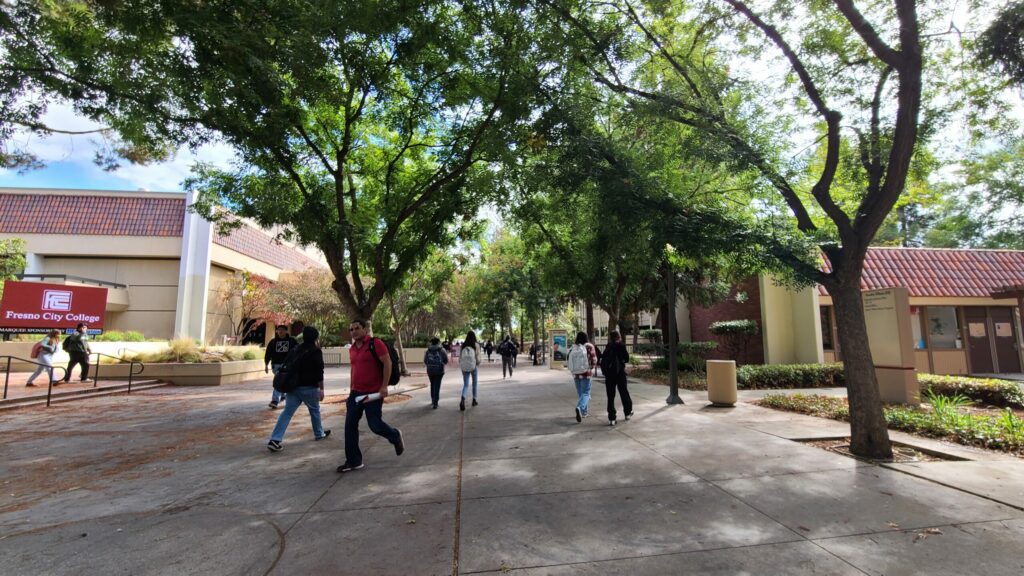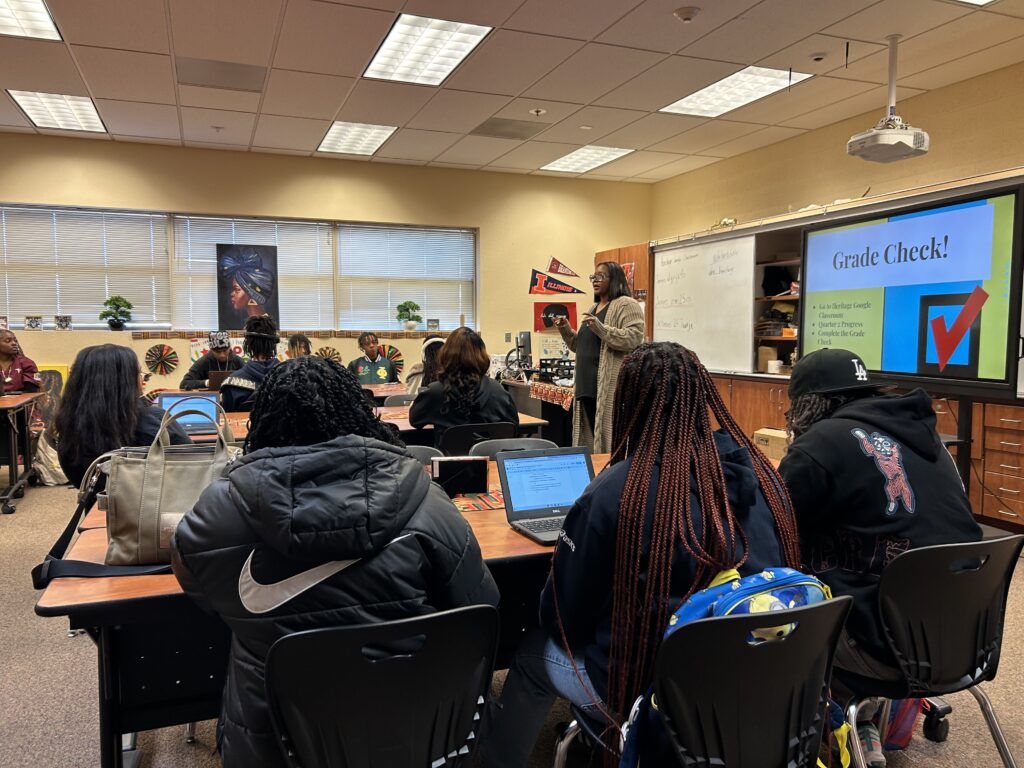
Students at Fresno City College
Credit: Ashleigh Panoo/EdSource
When most people think of part-time employment in the public sector, they assume that it (1) could be a steppingstone to a full-time job; (2) pays less than full-time, chiefly because it involves fewer hours of work; (3) is voluntary, and (4) is primarily meant to supplement a family’s income.
When it comes to California’s 36,000 part-time community college professors, the facts defy all four assumptions.
Unlike workers in other professions, part-time college instructors, regardless of length of service and/or quality of performance, will not be promoted to full-time unless they are lucky enough to secure an increasingly scarce full-time position teaching on the tenure track. Part-time instructors, many who work for decades off the tenure track, have been called “apprentices to nowhere.”
Over the last five decades, colleges have gravitated toward part-time instructors for the flexibility of their semester-length agreements with no obligation to rehire, and their lower expense. For example, while all full-time instructors receive state-paid health insurance, only about 10% (3,742) of the state’s part-timers do.
Part-time instructor salaries are not pro-rated based on a typical full-time salary; instead, they are a separate scale which amounts to about 50-60% of the full-time instructor rate. To be clear, this doesn’t mean they receive 50-60% of the income of a full-time instructor: California law caps part-time faculty workload at no more than 67% of full-time. This workload cap, when combined with the discounted rate of pay, means that the average California part-time instructor teaching at 60% of full-time receives about $20,000 while the average annual income for full-time instructors is in excess of $100,000 a year.
Surveys conducted by the American Federation of Teachers in 2020 and 2022 found that roughly 25% of part-time community college faculty nationwide were below the federal poverty line.
With no natural transition from part-time to full-time, this two-tier workplace takes on features of a caste system, especially as both full-time and part-time instructors satisfy the same credential requirements, award grades and credits that have the same value, and have the same tuition charged for their courses.
While California college instructors are represented by faculty unions (primarily the California Federation of Teachers or the California Teachers Association), the priority of those unions would seem to be tenured faculty, as evidenced by the differences in the collectively bargained working conditions.
In the case of workload, for example, while part-time instructors are barred from teaching full-time, full-time instructors may elect to teach overtime, often called course overloads, for additional income. Full-time instructors displace part-time jobs whenever they do. In fact, full-timers generally get to choose their courses, including overloads, before part-timers are assigned courses.
A bill being considered at present in the California Legislature is Assembly Bill 2277. It would raise the current part-time workload restriction from 67% to 85% of full time, which, in theory, could enable some part-timers to teach more classes and earn more income. But if passed, AB 2277 would hardly solve the problem for part-time instructors.
To make a more meaningful improvement, AB 2277 could be amended in two ways, neither of which make an impact on the state budget:
- Remove the artificial workload cap outright, thereby enabling part-time instructors the opportunity to work up to 100% of full time when work is available.
- Impose a ban on full-time tenure-track instructors from teaching overtime (overloads).
One possible source of opposition to these changes could be California’s faculty unions, which are dominated by full-timers. While supportive of earlier attempts at raising the cap to 85% (e.g., AB 897 in 2020, AB 375 in 2021, and AB 1856 in 2022) — neither union has shown a willingness to support elimination of the cap outright or curbing full-time overloads.
In 2008, AB 591 adjusted the cap from 60% to the current 67%, but the first iteration of that bill proposed outright elimination of the cap (as does our suggested amendment), which was opposed by the CFT (see the April 16, 2007 legislative digest and commentary assembled in a California Part-Time Faculty Association (CPFA) report).
Another source of opposition could be those full-time instructors accustomed to teaching overtime/overloads; they could oppose losing that option, which underscores the conflict of interest in a two-tier workplace when more for one tier means less for the other.
Gov. Gavin Newsom acknowledged that California “community colleges could not operate without part-time faculty” who “do not receive the same salary or benefits as their full-time colleagues” in his Oct. 8, 2021 veto of AB 375 based on budgetary concerns — the fear that the state’s 36,000 part-time instructors would suddenly qualify for health care. (That fear has since been addressed by a 400% increase in the state’s contribution to the Part-time Faculty Health Insurance Program from an annual $490,000 to $200 million.) In the meantime, part-time faculty continue to be barred from working full time.
Faculty unions and lawmakers should take a step toward abolishing California’s faculty involuntary part-time work restriction by allowing them to work full time and protecting their jobs. An amended version of AB 2277 is a no-cost way of doing so.
•••
Alexis Moore taught visual art at colleges and universities for over three decades and served on the executive board of the Pasadena City College Faculty Association of the California Community College Independents (CCCI).
Jack Longmate has long served on the Steering Committee of the Washington Part-Time Faculty Association and taught for over 28 years at Olympic College in Bremerton, Washington, where his ending annual salary was about $20,000 for teaching at 55% of an annual full-time teaching load.
The opinions in this commentary are those of the authors. If you would like to submit a commentary, please review our guidelines and contact us.


